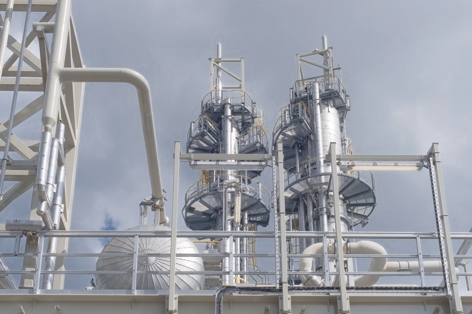The IEA estimates that fossil fuels will account for 60% of energy generation by 2030, making Carbon Capture & Storage (CCS) a vital technology for decarbonising the world’s energy supply. The IEA, the EU and the IPCC indicate that a fifth of the carbon reduction target needed to keep to the 2 Degrees Scenario (2DS) by 2050 could come from CCS alone. CCS is capable of reducing CO2 emissions from fossil fuel power stations by up to 90%, so the race to commercialise and industrialise the technology is on.
So what are the greatest barriers from a technology perspective and what advancements have been made?
Energy companies and CO2 suppliers have been capturing CO2 for decades; a technique that has been utilised, for instance, in Enhanced Oil Recovery (EOR). But capture remains the hardest aspect of CCS, and accounts for up to 80% of the costs of CCS. The Global Carbon Capture & Storage Institute (GCCSI) estimates that each Mwh supported by CCS costs energy generators an additional $50 - $100.

The CO2 Technology Centre Mongstad (TCM) a $1bn joint venture between the Norwegian government, Statoil, Shell and Sasol has been set up for vendors to test their technologies and to increase knowledge on capture technologies. Its aim is to reduce technical and financial risk, and accelerate the development of qualified technologies capable of wide scale international deployment.
One technology which has been tested since TCM opened in May 2012 is amine solvent carbon absorption, which has been tested in collaboration with technology partner, Aker Solutions.
In amine processing, a liquid comprising water and amines is used to absorb CO2 from flue gas. The technology has been used for decades in other applications and is considered to have a moderate technical risk. However, at TCM the vendors will evaluate opportunities for improvements in process design, construction methods and operations in order to qualify the technology for use in large scale post-combustion plants. Based on the findings from the amine plant, Off the back of the operational experience built up at among others at TCM, Shell is developing Quest; one of the world’s largest full-scale CCS projects that will be operational in 2015. Beginning in 2015, Quest will capture more than one million tonnes per year of CO2 from Shell’s Scotford oil sands upgrader near Fort Saskatchewan, Alberta - the equivalent of taking 175,000 cars off the road annually. The CO2 will be sent by an 80-km pipeline to a suitable storage site where it will be injected and permanently stored more than 2km underground.
“Technologies are advancing and knowledge sharing is taking place
It’s important to remember that CCS technology is an evolutionary process, which must be started now, to enable us to decarbonise existing fossil fuel reserves, as well as future fossil fuel excavations. TCM’s facilities enable future technology evolution, by providing the available area, utilities and infrastructure for the construction and testing of further carbon capture technology.
CCS technology has a vital role to play in the decarbonisation of global energy supply between now and 2050 and will have an even greater role to play beyond that, as unconventional energy sources take on an even greater resonance. It’s not a case of if, but when these technologies are developed and the longer we wait, the more expensive they become. These projects will only work through the sharing of knowledge allowing each project to stand on the shoulders of the previous, in order to develop the market.
Recently, the world’s first international test centre network for carbon capture test facilities was launched, to share knowledge and accelerate the commercialisation of technology. For the first time, a collaborative playing field has been established allowing technologists to advance technology innovation, secure public support for and develop awareness of CCS benefits.
It’s encouraging that technologies are advancing, and that knowledge sharing is taking place. The lead time for any new energy technology, from pilot to the beginnings of commercial deployment and then to materiality in the energy system (>1%) typically takes some 25-30 years.
We cannot predict exactly which technologies will be used by 2050, but what’s clear is that each of the various technology stages are vital for industrialisation, including the need for commercial demonstration programmes. This process begins to de-risk the technology for future business investment, bringing some level of certainty to expected capital expenditure and ongoing operating costs. This evolution of technologies helps to establish infrastructure, which in turn lowers the cost for the next projects.
Mr Ellingsen is managing director of CO2 Technology Centre Mongstad, a joint venture between Gassnova, Statoil, Shell and Statoil











UK Enters ‘Golden Age of Nuclear’
The delay (nearly 8 years) in getting approval for the Rolls-Royce SMR is most worrying. Signifies a torpid and expensive system that is quite onerous...